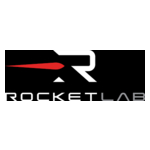ARTICLE AD BOX
This latest mission will see Rocket Lab perform multiple in-space engine burns to deploy two payloads to separate orbits several hundred kilometres apart.
LONG BEACH, Calif.–(BUSINESS WIRE)–Rocket Lab USA, Inc. (Nasdaq: RKLB) (“Rocket Lab” or “the Company”), a global leader in launch services and space systems, today announced it has set the launch window for its next Electron launch.
The ‘Beginning Of The Swarm’ mission is scheduled to launch from Rocket Lab Launch Complex 1 in Mahia, New Zealand during a 14-day launch window that opens on April 24th. Electron will carry two satellites for two separate customers: NEONSAT-1, an Earth observation satellite for the Satellite Technology Research Center (SaTReC) at the Korea Advanced Institute of Science and Technology (KAIST), and NASA’s Advanced Composite Solar Sail System (ACS3).
The primary payload for this mission, NEONSAT-1, is an Earth observation satellite with a high-resolution optical camera designed to monitor for natural disasters along the Korean Peninsula by pairing its images with artificial intelligence. NEONSAT-1 is the first satellite developed under the NEONSAT program by SaTReC and KAIST, Korea’s leading university in science and technology, which developed and operated Korea’s very first satellite KITSAT-1 more than 30 years ago. Other NEONSAT satellites are planned to be launched in 2026 and 2027 to build out the NEONSAT constellation. The program is a collaboration across multiple Korean academic, industry, and research institutions including SaTReC in KAIST, which is leading the program’s system design and engineering; the SaTReC Initiative, a Korean satellite manufacturer that has successfully developed seven previous remote sensing satellites for low Earth orbit; and the Korea Aerospace Research Institute (KARI), which is managing the mission’s ground segments and technology supervision for the NEONSAT program. NEONSAT is funded by the Koren government’s Ministry of Science and ICT (MSIT).
NASA’s ACS3 is a technology demonstration of new materials and deployable structures for solar sail propulsion systems that use sunlight to propel the spacecraft. Much like a sailboat is powered by wind pushing against a sail, solar sails employ the pressure of sunlight for propulsion, eliminating the need for conventional rocket propellant. The mission plans to test the deployment of new composite booms that will unfurl the solar sail to measure approximately 30 feet per side, or about the size of a small apartment in total. Flight data obtained during the demonstration will be used for designing future larger-scale composite solar sail systems for space weather early warning satellites, asteroid and other small body reconnaissance missions, and missions to observe the polar regions of the sun. The ACS3 was designed and built at NASA’s Langley Research Center in Hampton, Virginia, and the technology demonstration is managed and funded by the Small Spacecraft Technology program at and with NASA’s Ames Research Center in Silicon Valley. NASA’s Science Mission Directorate, interested in larger solar sail missions in the future, is funding an extended operations component to execute a series of maneuvers to raise and lower the spacecraft’s orbit, demonstrating the practicality of solar sailing.
The capability of Electron’s Kick Stage to perform multiple engine burns in space and deploy individual satellites to unique orbits is critical to this mission. The Kick Stage will first ignite its Curie engine to deploy NEONSAT-1 to its target 520km circular Earth orbit. After the payload’s separation, it will ignite its Curie engine again to perform an apogee raise to 1,000km. Once in this phasing orbit, the Curie will ignite a third time to circularise before deploying the solar sail demonstration spacecraft. The Kick Stage will then ignite Curie a fourth and final time to perform a deorbit burn that returns the Kick Stage closer to Earth, speeding up its eventual deorbit and removal from space to support a more sustainable space environment. Rocket Lab has demonstrated similar orbit raises, inclination changes, and deorbit maneuvers across previous Electron missions and most recently with its successful spacecraft re-entry for Varda on February 21, 2024.
‘Beginning Of The Swarm’ will be Rocket Lab’s fifth mission of 2024 and the 47th Electron launch overall.
‘Beginning Of The Swarm’ details:
- Launch window: opens no-earlier-than April 24, 2024.
- Customers: The Korea Advanced Institute of Science and Technology (KAIST) and NASA.
- Satellites: NEONSAT-1 for SaTReC/KAIST and the Advanced Composite Solar Sail System (ACS3) for NASA.
- Target orbits: NEONSAT-1 to 520km circular Earth orbit, ACS3 to 1,000km circular Earth orbit.
- Launch broadcast: The launch will broadcast live at www.rocketlabusa.com/live-stream
+ About Rocket Lab
Founded in 2006, Rocket Lab is an end-to-end space company with an established track record of mission success. We deliver reliable launch services, satellite manufacture, spacecraft components, and on-orbit management solutions that make it faster, easier, and more affordable to access space. Headquartered in Long Beach, California, Rocket Lab designs and manufactures the Electron small orbital launch vehicle, the Photon satellite platform, and the Company is developing the large Neutron launch vehicle for constellation deployment. Since its first orbital launch in January 2018, Rocket Lab’s Electron launch vehicle has become the second most frequently launched U.S. rocket annually and has delivered 181 satellites to orbit for private and public sector organizations, enabling operations in national security, scientific research, space debris mitigation, Earth observation, climate monitoring, and communications. Rocket Lab’s Photon spacecraft platform has been selected to support NASA missions to the Moon and Mars, as well as the first private commercial mission to Venus. Rocket Lab has three launch pads at two launch sites, including two launch pads at a private orbital launch site located in New Zealand and a third launch pad in Virginia. To learn more, visit www.rocketlabusa.com.
+ Forward Looking Statements
This press release contains forward-looking statements within the meaning of the Private Securities Litigation Reform Act of 1995. We intend such forward-looking statements to be covered by the safe harbor provisions for forward looking statements contained in Section 27A of the Securities Act of 1933, as amended (the “Securities Act”) and Section 21E of the Securities Exchange Act of 1934, as amended (the “Exchange Act”). All statements contained in this press release other than statements of historical fact, including, without limitation, statements regarding our launch and space systems operations, launch schedule and window, safe and repeatable access to space, Neutron development, operational expansion and business strategy are forward-looking statements. The words “believe,” “may,” “will,” “estimate,” “potential,” “continue,” “anticipate,” “intend,” “expect,” “strategy,” “future,” “could,” “would,” “project,” “plan,” “target,” and similar expressions are intended to identify forward-looking statements, though not all forward-looking statements use these words or expressions. These statements are neither promises nor guarantees, but involve known and unknown risks, uncertainties and other important factors that may cause our actual results, performance or achievements to be materially different from any future results, performance or achievements expressed or implied by the forward-looking statements, including but not limited to the factors, risks and uncertainties included in our Annual Report on Form 10-K for the fiscal year ended December 31, 2023, as such factors may be updated from time to time in our other filings with the Securities and Exchange Commission (the “SEC”), accessible on the SEC’s website at www.sec.gov and the Investor Relations section of our website at www.rocketlabusa.com, which could cause our actual results to differ materially from those indicated by the forward-looking statements made in this press release. Any such forward-looking statements represent management’s estimates as of the date of this press release. While we may elect to update such forward-looking statements at some point in the future, we disclaim any obligation to do so, even if subsequent events cause our views to change.
Contacts
+ Rocket Lab Media Contact
Murielle Baker
media@rocketlabusa.com
The content is by Business Wire. Headlines of Today Media is not responsible for the content provided or any links related to this content. Headlines of Today Media is not responsible for the correctness, topicality or the quality of the content.
The post Rocket Lab Prepares to Launch Mission for KAIST and NASA to Deploy Satellites to Two Separate Orbits appeared first on Headlines of Today.
.png)
 7 months ago
4
7 months ago
4










 English (US)
English (US)